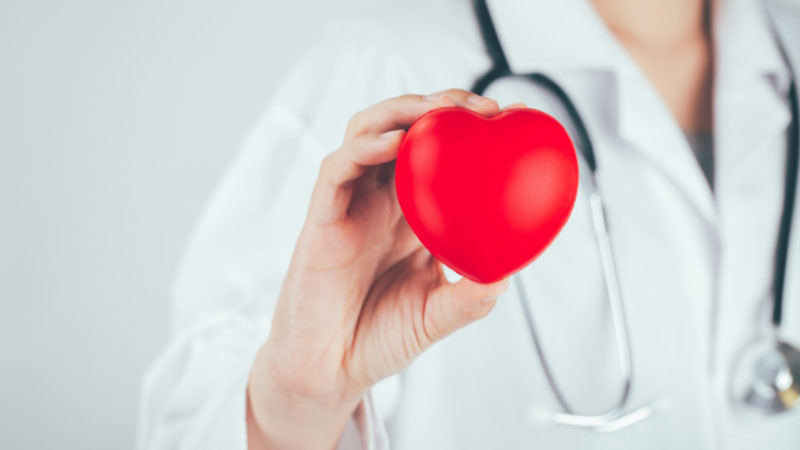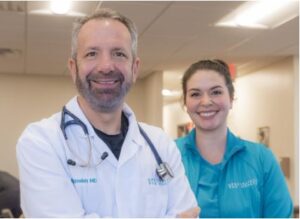
National Cardiac Rehabilitation Week, February 12-18
The human heart is the most important and incredible muscle in the body, beating about 100,000 times each day to send 3,600 gallons of blood through 75,000 miles of blood vessels. As amazing as the heart is, cardiovascular disease (CVD) has been the No. 1 killer of Americans since 1920, and by 2035, the percentage of Americans with CVD is projected to rise to 45% (131.2 million) of the total U.S. population.1
CVD includes conditions such as high blood pressure, coronary heart disease, stroke, congestive heart failure and atrial fibrillation.
However, the heart often can be treated, and as with any muscle, when the heart is healing, it needs rehabilitation.
In August 2021, Dr. Michael Almaleh’s goal for a WellMed cardiac rehab program was realized with the opening of the WellMed Cardiac Rehabilitation Center in San Antonio, Texas.
“Cardiac rehab is not a new concept. It’s essentially monitored physical therapy for the heart, combined with education and lifestyle modification,” said Dr. Almaleh, chief of cardiology and specialty care for the WellMed Greater Texas region.
“What’s fairly new is we now have our own program and facility where we can take care of our patients.”
WellMed appointed Rachel Stolts, RN, a former ICU nurse, to design the new program of care.
“I didn’t have cardiac rehab experience, but I took the challenge,” Rachel said. She spent many hours in deep research and shadowed others who ran a similar program at Brooke Army Medical Center.
“The program is a big commitment for our patients,” Rachel said. “Patients must complete 36 one-hour sessions to graduate. Despite the hard work, many patients come in two or three times a week.”
“Many of our patients begin to see that the benefits of a stronger, healthier heart and the knowledge of how to live a heart-healthy life are worth every minute of work, and every drop of sweat,” Dr. Almaleh said.
According to the American Heart Association, cardiac rehab helps you regain control of your health and lower your risk of a second cardiac event such as a heart attack.
The five main components of cardiac rehab, according to the International Council of Cardiovascular Prevention and Rehabilitation, are nutritional counseling, risk factor modification, psychosocial management, patient education and exercise training.
“Every patient who has had heart failure, peripheral vascular disease, or who has had valve replacement or bypass surgery needs a program like this to help them live longer with fewer complications,” Dr. Almaleh said. “Yet, nationally, only 25% of Medicare patients who are eligible for cardiac rehabilitation are enrolled in a program.”
To date, 47% of enrolled WellMed patients have completed the program. While the number may not seem impressive at first, compared to the national average rate of 26.9%2, this program is boasting a better completion rate.
In an initial assessment, Rachel will evaluate a patient’s abilities, limitations and situation. “I want to have a good idea of where they are starting from. I talk to the patient to evaluate their living situation, mobility, cognitive ability, medication adherence, stress level, support system, anything that’s a risk factor,” she said. “Next, I have them do a six-minute treadmill test with EKG. It’s self-paced and they can stop and start as they need. Then based on their situation and abilities, together, we make a goal.”
“Ironically, many people believe their physical limitations will prevent them from exercising and their heart is too fragile for the program. To help alleviate their fears, we start really slow so they don’t get discouraged and they don’t get injured. I modify exercises to meet patient abilities, and we include strength training so they have a good solid base,” she said. “This way I show them their heart is not fragile, and we are making it stronger.”
Dr. Almaleh would like to see the program continue to grow. “I’m proud of how we created this program. We have an amazing staff, great equipment and a comprehensive curriculum – and the sole purpose is to benefit our patients,” he said.
Rachel agrees. “We give our patients all kinds of resources, we keep them encouraged and we make it fun.”
The best part, she says, is building relationships and the satisfaction of seeing her patients do so well.
###
1 Burden-Report-Consumer-Report.pdf (heart.org)
2 https://www.ahajournals.org/doi/10.1161/CIRCOUTCOMES.119.005902


